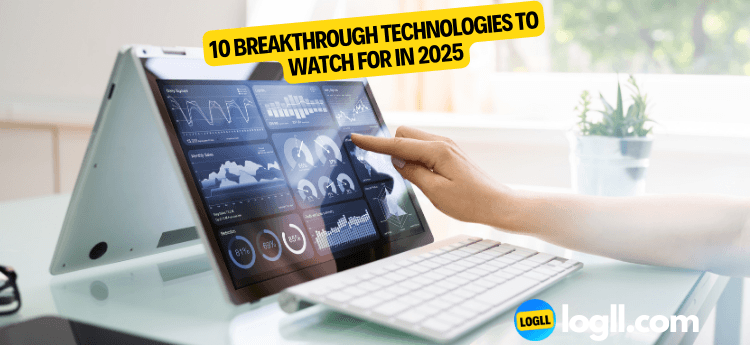Are you ready for the future? With so much exciting technology on the horizon, the next few years are sure to bring some incredible breakthroughs. In this post, we’ll be taking a look at 10 of the most promising technologies to watch out for in 2025.
From artificial intelligence and robotics to renewable energy and biotechnology, these innovations are set to change the way we live and work. So buckle up and get ready to be amazed as we explore the technologies that will shape our world in the not-too-distant future.
Artificial Intelligence
Artificial intelligence, or AI, refers to the development of computer systems that are able to perform tasks that would normally require human intelligence, such as learning, problem-solving, and decision-making.
Examples of how AI is being used or could be used in the future:
AI is already being used in a variety of industries and applications, including customer service, healthcare, and finance. For example, chatbots powered by AI are able to handle customer inquiries and provide assistance, while AI algorithms are being used to analyze medical images and assist with diagnoses.
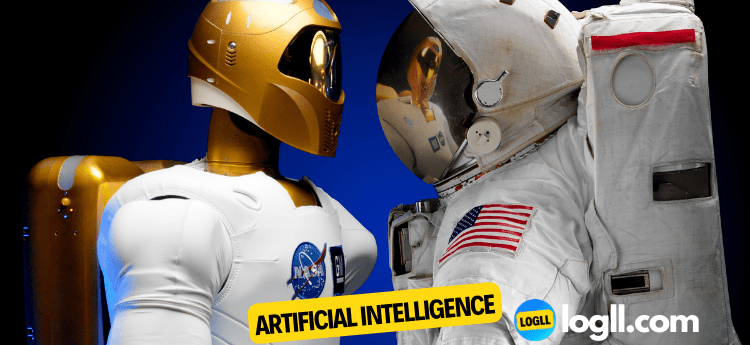
(Image credit: logll.com)
In the future, AI has the potential to revolutionize the way we work, by automating many tasks and freeing up humans to focus on more creative and complex work.
Potential benefits and drawbacks of AI:
However, there are also concerns about the potential negative impact of AI on employment, as well as issues surrounding the ethics of AI decision-making and the need for proper regulation. These are important considerations as we continue to develop and utilize AI technology.
Robotics
Definition and explanation of robotics:
Robotics refers to the design, construction, and operation of robots, which are machines that are able to perform tasks automatically or semi-automatically.
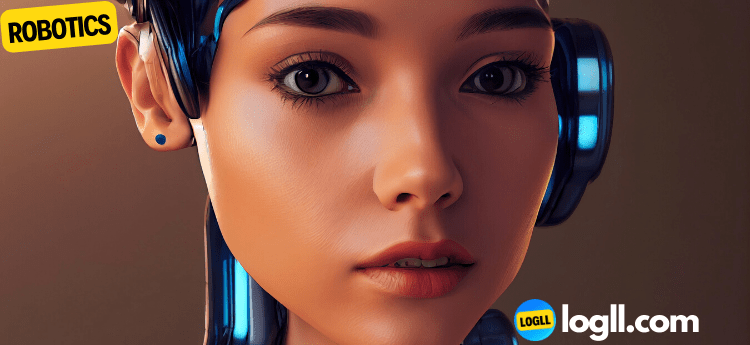
(Image credit: logll.com)
Examples of current and future applications of robotics in industries such as manufacturing, healthcare, and transportation:
In the field of manufacturing, robotics has long been used to increase efficiency and precision. In recent years, there has also been a surge in the use of robotics in healthcare, with robots being used for tasks such as dispensing medication and assisting with surgeries. In the transportation industry, we are seeing the development of autonomous vehicles that are able to drive themselves using sensors and AI.
Potential benefits and drawbacks of increased reliance on robotics:
The use of robotics has the potential to greatly improve productivity and reduce the need for human labor in certain industries. However, there are also concerns about the potential for job displacement and the need for proper regulation and ethical considerations when it comes to the use of robotics. These are important issues to consider as we continue to develop and utilize robotic technology.
⭐️⭐️⭐️⭐️⭐️ Cool Gadgets
RTOSY Magnetic Levitation Floating Globe with LED Light, Desk Gadget Decor, Fixture Floating Globes & Shade, Cool Tech Gifts for Men/Father/Husband/Boyfriend/Kids/Boss, Gifts for Desk
$38.99
Mydethun 3D Moon Lamp with 3.5 Inch Ceramic Base, LED Night Light, Mood Lighting with Touch Control Brightness for Home Décor, Bedroom, Gifts Kids Women Christmas New Year Birthday - White & Yellow
$13.59
FosPower 2000mAh NOAA Emergency Weather Radio (Model A1) Portable Power Bank with Solar Charging, Hand Crank & Battery Operated, SOS Alarm, AM/FM & LED Flashlight for Outdoor Emergency
$29.99

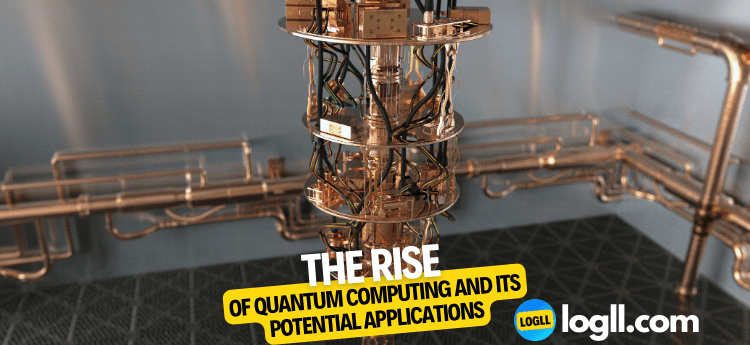
(Image credit: logll.com)
Renewable Energy
Renewable energy refers to energy sources that are replenished naturally and are not depleted by use, such as solar, wind, and hydroelectric power.
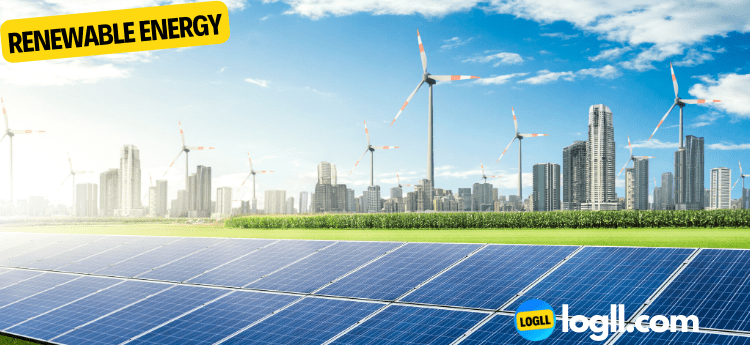
(Image credit: logll.com)
Current state of renewable energy adoption and efforts to increase its use:
There is a growing movement to increase the adoption of renewable energy as a way to combat climate change and reduce our reliance on fossil fuels. Currently, the majority of the world’s energy still comes from non-renewable sources, but we are seeing increasing investments in renewable energy infrastructure and the development of new technologies such as advanced solar panels and offshore wind farms.
Potential benefits and drawbacks of transitioning to renewable energy:
The transition to renewable energy has the potential to greatly reduce carbon emissions and improve air quality, leading to numerous environmental and public health benefits. However, there are also challenges to overcome, such as the high upfront costs of implementing renewable energy systems and the need for reliable storage solutions. As we continue to pursue a more sustainable energy future, it will be important to carefully consider the potential benefits and drawbacks of renewable energy adoption.
Biotechnology
Biotechnology is the use of living organisms or their products to develop or make products, such as drugs, food, and other materials.
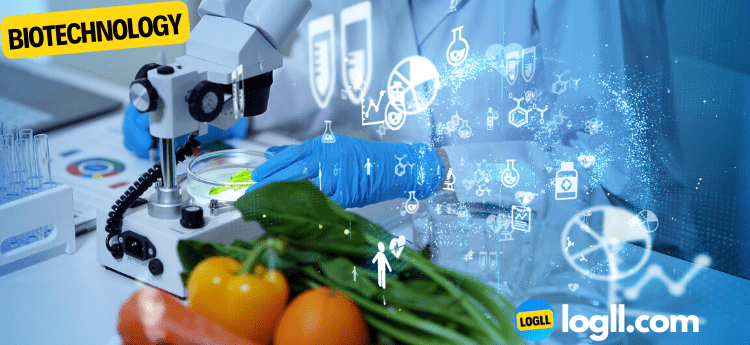
(Image credit: logll.com)
Examples of current and potential uses of biotechnology in fields such as medicine and agriculture:
One of the most well-known applications of biotechnology is in the development of medications, such as insulin for diabetics and monoclonal antibodies for cancer treatment. In the agricultural industry, biotechnology is being used to develop crops that are more resistant to pests and diseases, as well as to produce healthier and more nutritious foods.
Potential benefits and drawbacks of biotechnology:
The use of biotechnology has the potential to greatly improve human health and food security. However, there are also concerns about the potential negative impacts of biotechnology, such as the possibility of unintended consequences and the need for proper regulation and oversight. As we continue to make advances in biotechnology, it will be important to carefully consider these potential benefits and drawbacks.

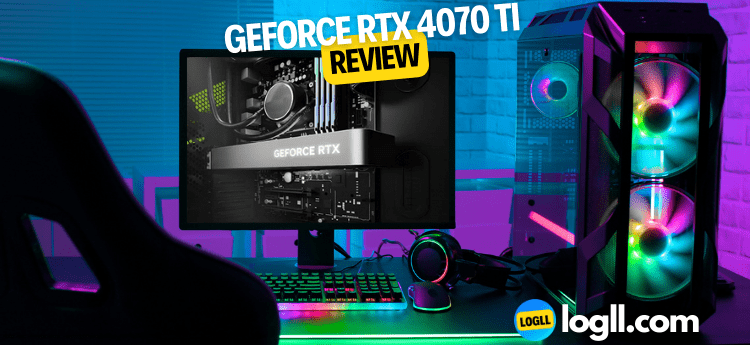
(Image credit: logll.com)
Virtual and Augmented Reality
Virtual reality (VR) and augmented reality (AR) are technologies that allow users to experience and interact with computer-generated environments and objects.
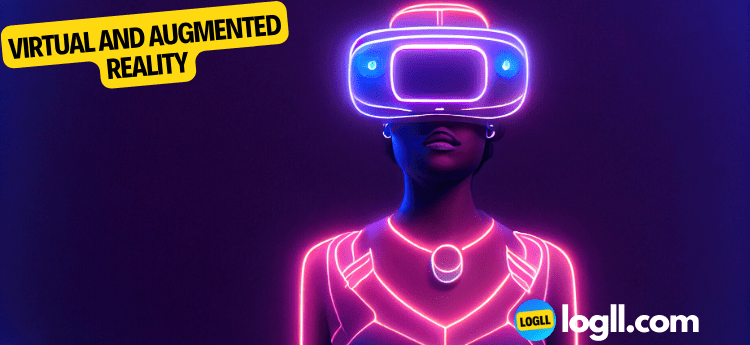
(Image credit: logll.com)
Examples of current and potential uses of VR and AR in industries such as gaming, entertainment, and education:
In the gaming industry, VR and AR have been used to create immersive and interactive experiences. In the entertainment industry, VR and AR are being used to create new forms of storytelling and events. In education, VR and AR have the potential to revolutionize the way we learn, by providing interactive and experiential learning opportunities.
Potential benefits and drawbacks of increased use of VR and AR:
The use of VR and AR has the potential to greatly enhance the way we interact with technology and the world around us. However, there are also concerns about the potential negative impacts of increased use of VR and AR, such as the possibility of addiction and the need for proper regulation and oversight. As we continue to develop and utilize these technologies, it will be important to carefully consider these potential benefits and drawbacks.
Internet of Things
The Internet of Things (IoT) refers to the interconnected network of devices that are able to communicate and exchange data with one another, often through the internet.
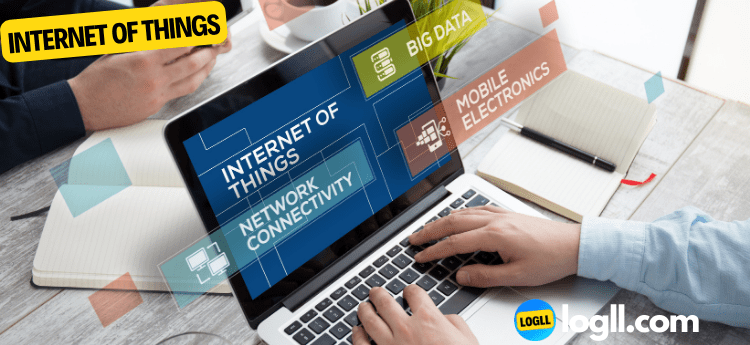
(Image credit: logll.com)
Examples of current and potential uses of the IoT in areas such as home automation, transportation, and healthcare:
In the area of home automation, the IoT is being used to create smart homes that are able to adjust temperature, lighting, and security settings automatically. In transportation, the IoT is being utilized in the development of self-driving cars and smart cities. In healthcare, the IoT is being used to monitor patient vital signs and track medical equipment.
Potential benefits and drawbacks of an increasingly connected world:
The use of the IoT has the potential to greatly improve efficiency and convenience in many areas of our lives. However, there are also concerns about the potential negative impacts of an increasingly connected world, such as the need for proper security measures to protect against data breaches and the potential for loss of privacy. As we continue to develop and utilize the IoT, it will be important to carefully consider these potential benefits and drawbacks.


(Image credit: logll.com)
5G Communication Technology
5G is the fifth generation of mobile communication technology, and it is set to revolutionize the way we connect to the internet and communicate with one another.
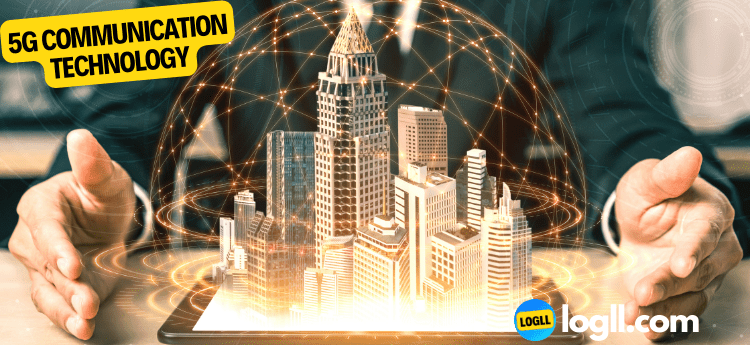
(Image credit: logll.com)
Benefits of 5G compared to previous generations of mobile communication technology:
One of the main benefits of 5G compared to previous generations of mobile technology is its ability to support much faster data speeds and more connected devices. This means that 5G will be able to support a wide range of applications and services, such as virtual and augmented reality, connected vehicles, and the Internet of Things.
Potential applications and impact of widespread 5G adoption:
The widespread adoption of 5G has the potential to greatly improve the way we communicate and access information, and it could also have a significant economic impact by driving the development of new technologies and businesses. However, there are also concerns about the potential negative impacts of 5G, such as the need for infrastructure investments and the potential for health risks from increased exposure to electromagnetic radiation. As we continue to roll out 5G networks and utilize this technology, it will be important to carefully consider these potential benefits and drawbacks.
Conclusion
As we’ve seen, the next few years are sure to bring some exciting technological breakthroughs that have the potential to greatly impact the way we live and work. From artificial intelligence and robotics to renewable energy and biotechnology, these innovations are set to change the world as we know it.
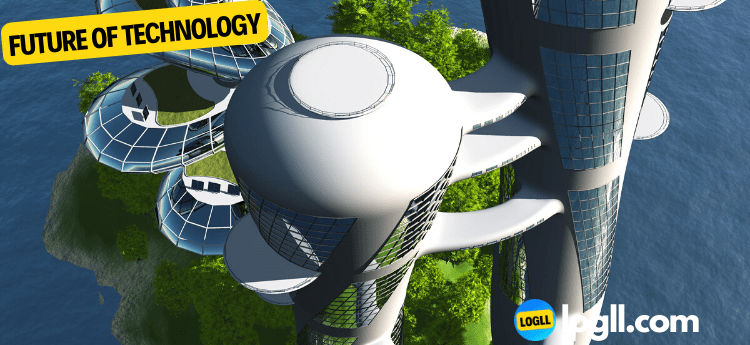
(Image credit: logll.com)
Potential future impact of these technologies on society and industry:
It’s important to remember, however, that with any new technology comes the need for careful consideration of the potential benefits and drawbacks. As we continue to develop and utilize these technologies, it will be important to address concerns such as employment, ethics, and regulation in order to ensure that they are used in a responsible and beneficial way.
So where will these technologies take us? The future is always uncertain, but one thing is for sure: the advancements we’ll see in the next few years are sure to be nothing short of amazing. Will we see robots taking over our jobs? Will renewable energy become the norm? Only time will tell, but one thing is certain – the future is sure to be an exciting place.
We publish our latest Logll Tech News via Telegram and Twitter.
Join Our Newsletter
Frequently Asked Questions
AI refers to the development of computer systems that are able to perform tasks that would normally require human intelligence, such as learning, problem-solving, and decision-making.
AI is already being used in a variety of industries and applications, including customer service, healthcare, and finance. For example, chatbots powered by AI are able to handle customer inquiries and provide assistance, while AI algorithms are being used to analyze medical images and assist with diagnoses.
In the future, AI has the potential to revolutionize the way we work, by automating many tasks and freeing up humans to focus on more creative and complex work.
The use of AI has the potential to greatly improve efficiency and accuracy in many industries, as well as freeing up human labor to focus on more complex tasks.
There are also concerns about the potential negative impact of AI on employment, as well as issues surrounding the ethics of AI decision-making and the need for proper regulation.
Robotics refers to the design, construction, and operation of robots, which are machines that are able to perform tasks automatically or semi-automatically.
In the field of manufacturing, robotics has long been used to increase efficiency and precision. In recent years, there has also been a surge in the use of robotics in healthcare, with robots being used for tasks such as dispensing medication and assisting with surgeries. In the transportation industry, we are seeing the development of autonomous vehicles that are able to drive themselves using sensors and AI.
The use of robotics has the potential to greatly improve productivity and reduce the need for human labor in certain industries.
There are also concerns about the potential for job displacement and the need for proper regulation and ethical considerations when it comes to the use of robotics.
As we continue to develop and utilize robotic technology, it is important to consider the potential impacts on employment and society, as well as to ensure that the technology is used ethically and responsibly.
Renewable energy refers to energy sources that are replenished naturally and are not depleted by use, such as solar, wind, and hydroelectric power.
There is a growing movement to increase the adoption of renewable energy as a way to combat climate change and reduce our reliance on fossil fuels. However, currently the majority of the world’s energy still comes from non-renewable sources.
The transition to renewable energy has the potential to greatly reduce carbon emissions and improve air quality, leading to numerous environmental and public health benefits.
There are also challenges to overcome, such as the high upfront costs of implementing renewable energy systems and the need for reliable storage solutions.
As we continue to pursue a more sustainable energy future, it is important to carefully weigh the potential benefits and drawbacks in order to make informed decisions about the adoption and implementation of renewable energy sources.
Biotechnology is the use of living organisms or their products to develop or make products, such as drugs, food, and other materials.
One of the most well-known applications of biotechnology is in the development of medications, such as insulin for diabetics and monoclonal antibodies for cancer treatment. In the agricultural industry, biotechnology is being used to develop crops that are more resistant to pests and diseases, as well as to produce healthier and more nutritious foods.
The use of biotechnology has the potential to greatly improve human health and food security.
There are also concerns about the potential negative impacts of biotechnology, such as the possibility of unintended consequences and the need for proper regulation and oversight.
As we continue to make advances in biotechnology, it is important to carefully consider these potential benefits and drawbacks in order to ensure that the technology is used responsibly and ethically.
Virtual reality (VR) and augmented reality (AR) are technologies that allow users to experience and interact with computer-generated environments and objects.
In the gaming industry, VR and AR have been used to create immersive and interactive experiences. In the entertainment industry, VR and AR are being used to create new forms of storytelling and events. In education, VR and AR have the potential to revolutionize the way we learn, by providing interactive and experiential learning opportunities.
The use of VR and AR has the potential to greatly enhance the way we interact with technology and the world around us.
There are also concerns about the potential negative impacts of increased use of VR and AR, such as the possibility of addiction and the need for proper regulation and oversight.
As we continue to develop and utilize these technologies, it is important to carefully consider these potential benefits and drawbacks in order to ensure that they are used responsibly and ethically.
The Internet of Things (IoT) refers to the interconnected network of devices that are able to communicate and exchange data with one another, often through the internet.
In the area of home automation, the IoT is being used to create smart homes that are able to adjust temperature, lighting, and security settings automatically. In transportation, the IoT is being utilized in the development of self-driving cars and smart cities. In healthcare, the IoT is being used to monitor patient vital signs and track medical equipment.
The use of the IoT has the potential to greatly improve efficiency and convenience in many areas of our lives.
There are also concerns about the potential negative impacts of an increasingly connected world, such as the need for proper security measures to protect against data breaches and the potential for loss of privacy.
As we continue to develop and utilize the IoT, it is important to carefully consider these potential benefits and drawbacks in order to ensure that it is used responsibly and ethically.
5G is the fifth generation of mobile communication technology.
5G technology is able to support much faster data speeds and more connected devices compared to previous generations.
5G technology has the potential to support a wide range of applications and services, such as virtual and augmented reality, connected vehicles, and the Internet of Things.
The widespread adoption of 5G has the potential to greatly improve the way we communicate and access information, and it could also drive the development of new technologies and businesses.
There are concerns about the potential negative impacts of 5G, such as the need for infrastructure investments and the potential for health risks from increased exposure to electromagnetic radiation. It will be important to carefully consider these potential benefits and drawbacks as we continue to roll out 5G networks and utilize this technology.
Some examples of technological breakthroughs that have the potential to greatly impact society and industry in the next few years include artificial intelligence, robotics, renewable energy, and biotechnology.
It is important to carefully consider the potential benefits and drawbacks of these technologies, as well as address concerns such as employment, ethics, and regulation to ensure that they are used in a responsible and beneficial way.
It is difficult to predict exactly what the future holds, but it is possible that robots could take over some jobs in the future.
It is difficult to predict exactly what the future holds, but it is possible that renewable energy could become more widely used in the future.
The future is always uncertain, but it is likely that we will see exciting technological advancements in the next few years.


